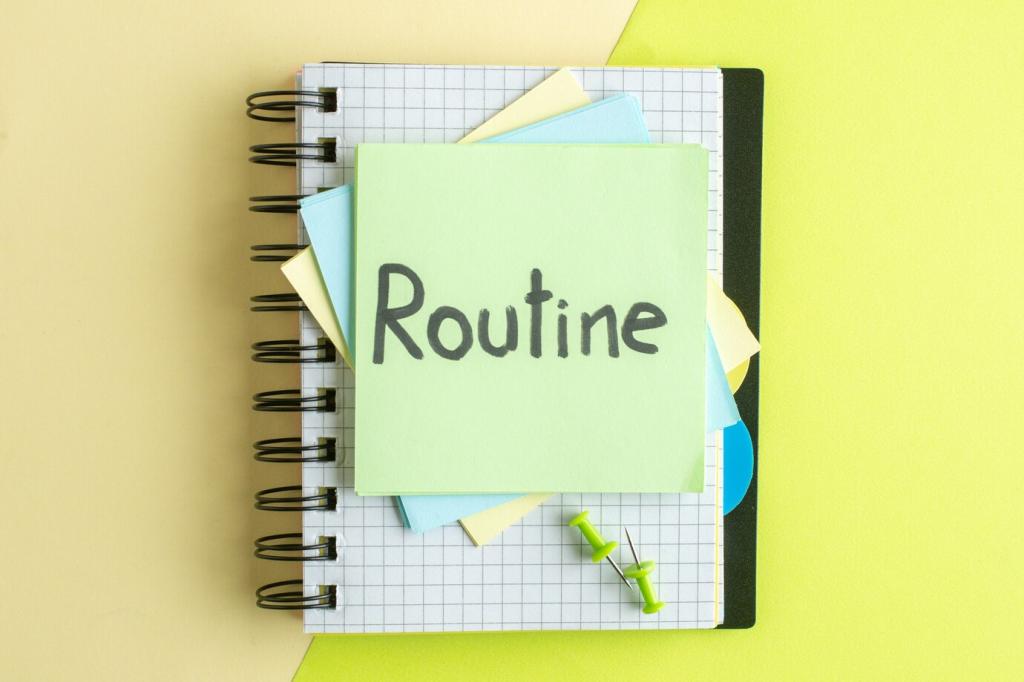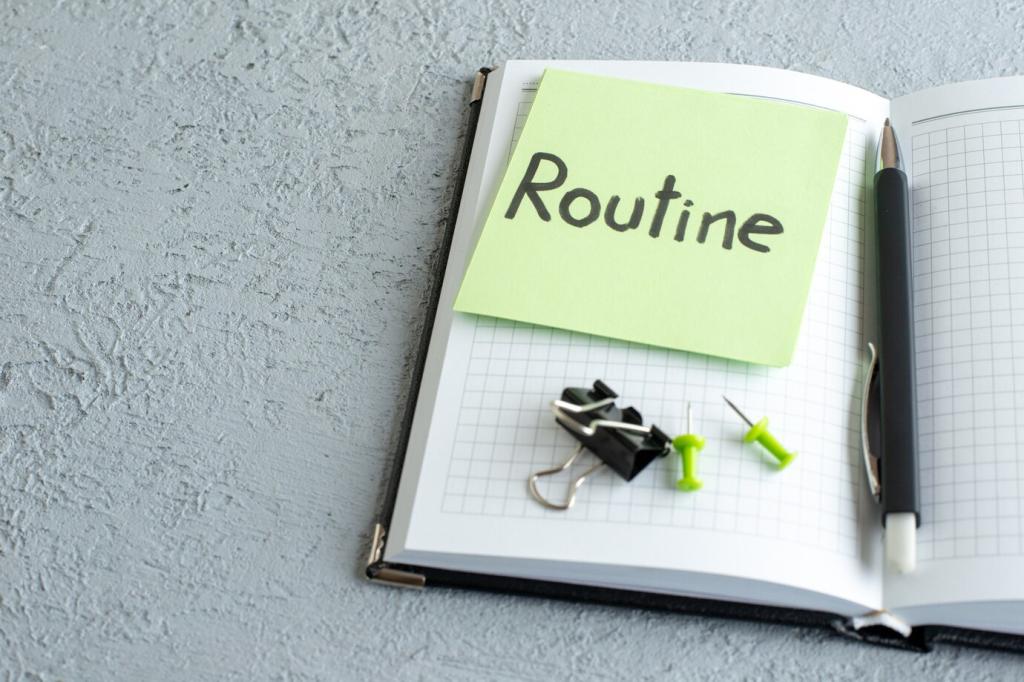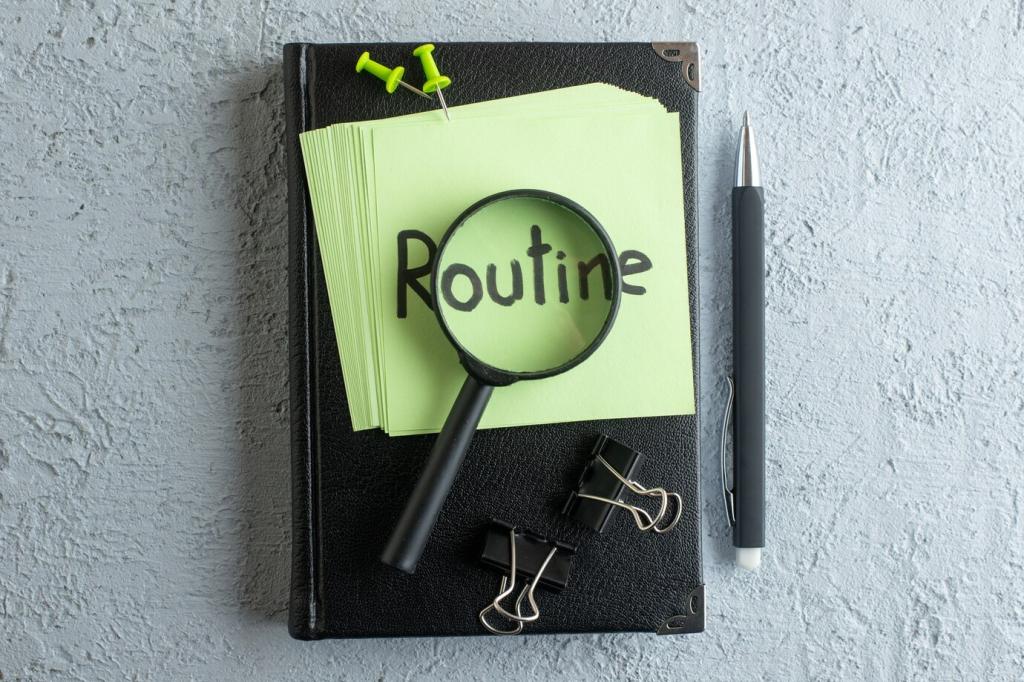Optimize Your Day with Habit Stacking
Chosen theme: Daily Routine Optimizations through Habit Stacking. Build small, linked actions that ride your existing routines, reducing friction and amplifying results. Let’s craft stacks that feel natural, resilient, and rewarding.

Cues, Anchors, and Brain Science
Habit stacking attaches a tiny action to a reliable cue you already do, like brewing coffee. Your basal ganglia love predictable patterns, so the new behavior becomes easier, faster, and almost automatic.

The Two-Minute Rule in Stacks
Start each stacked behavior so small it requires less than two minutes. The point is consistency, not intensity. Tiny steps consistently executed compound into daily routine optimizations that actually last.

Tell Us Your Anchor
What existing habit will you anchor to first? Comment with your anchor and the tiny behavior you’ll attach. Your example might spark someone else’s perfect, sustainable daily improvement.
Morning Momentum: Stacks that Start Strong
After brushing your teeth, drink a full glass of water, practice sixty seconds of box breathing, then review your top three priorities. This calm sequence sharpens attention and kickstarts purposeful action.
Morning Momentum: Stacks that Start Strong
Once the coffee machine finishes, do ten squats, open the blinds for sunlight, and set a ten-minute focus timer. Movement plus light primes energy while the timer nudges immediate, decisive progress.



Focused Workday Stacks
After opening your laptop, write your single most important outcome on a sticky note, close chat apps, and only then open email. This stack protects priorities before distractions multiply.
Focused Workday Stacks
When the timer starts, take one slow breath, commit to the next concrete step, then work for twenty-five minutes. When it ends, stand, stretch, sip water, and review the next micro-task.
Evening Wind-Down and Reflection
From Dinner to Digital Dusk
After setting your plate in the sink, start the dishwasher, dim living room lights, and place your phone on a charger outside the bedroom. These signals tell your body it is time to unwind.
Gratitude, Journal, Tomorrow’s First Step
When you brush your teeth, jot three gratitudes, write one lesson from today, and lay out tomorrow’s first task. Reflection closes mental loops while preparing a frictionless morning start.
Invite: What Calms Your Evenings?
Tell us your favorite wind-down stack. Is it tea, pages of a novel, or a short stretch? Share your sequence so other readers can borrow a calmer, kinder nightly landing.
Designing Your First Stack
Choose a Stable Anchor
Great anchors are daily, reliable events—boiling the kettle, locking the front door, starting the car. The more consistent the anchor, the easier your new behavior slides into routine.
Make It Tiny and Obvious
Shrink the behavior to a version you can complete even on rough days. Place cues in the environment—notes, laid-out tools, prefilled apps—so the next step is visible, immediate, and effortless.
Subscribe for a Weekly Stack Challenge
Want structured practice? Subscribe to our newsletter for one new micro-stack each week, plus reader examples. We’ll iterate together and celebrate consistently achievable, realistic wins.
Real Stories: Habit Stacking Transformations
Maya, a night-shift nurse, anchored breathing to the kettle, vitamins to her mug, and a one-line intention to tying her shoes. Five minutes later, her mornings felt calmer and more intentional.
Real Stories: Habit Stacking Transformations
Leo used his train ride to draft voice notes summarizing yesterday’s work, then practice one algorithm problem, then set his first task. That stack shaved indecision and jump-started productive flow.
Real Stories: Habit Stacking Transformations
Which stack surprised you with outsized results? Share the anchor, the two or three steps, and the benefit you noticed. Your story might be the nudge another reader needs this week.
If your anchor moved—new schedule, travel, or season—choose a more reliable cue. Attach identity language: I am the kind of person who reboots stacks quickly when contexts change.

